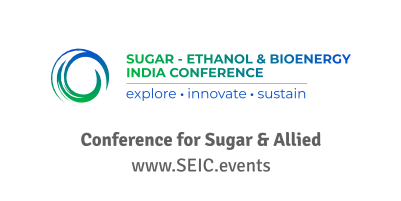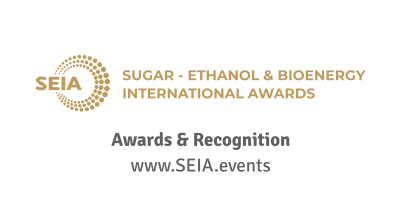In the ongoing ethanol supply year, the ethanol industry has navigated through a series of challenges, including production constraints, shortages in feedstock, elevated prices of raw materials, and other influencing factors. BioEnergy Times recently interviewed Prasad Rajeram Ghawate, Director and CEO of Rajganga Biorefineries Pvt Ltd, to gain insights into the current landscape, its impacts, encountered hurdles, and emerging concerns.
Below are the excerpts from the interview:
Q. The government had restricted ethanol production from B-heavy molasses (BHM) in December but later capped sugar diversion to 17 LMT. Recently, it allowed sugar mills to use their existing stock of BHM. Considering this, how much has the industry been impacted?
Answer: The government’s recent decisions regarding ethanol production and sugar diversion have significantly impacted the industry, leading to considerable price volatility for molasses, spirits, and ethanol over the last two quarters of the 2023-24 Ethanol Supply Year (ESY).
In Maharashtra, the price trends have been as follows over the last two quarters:
C-Heavy Molasses: Prices have fluctuated considerably, peaking at ₹12,500 per metric ton and dropping to a low of ₹10,000 per metric ton.
B-Heavy Molasses: Prices have remained relatively stable, ranging between ₹11,000 and ₹11,500 per metric ton.
Industrial Spirit (Molasses): Prices have decreased from ₹55 per litre to ₹46 per litre.
Food-Grade Spirit(Molasses): Prices have also fallen, from ₹62 per litre to ₹55 per litre.
Industrial Ethanol: Prices have remained around ₹55 per litre.
Due to the very instant decisions of the Government of India, the supply and demand of ethanol have been significantly disturbed in the market. These fluctuations indicate the industry’s sensitivity to regulatory changes and the impact of government policies on market stability.
Q. Is the ethanol target of 15 percent in the current ESY and 20 percent by 2025 achievable?
Answer: Target is achievable as of current, India’s industrial ethanol production capacity stands at 13.80BL, with 8.75BL from molasses and 5.05BL from grain feedstocks. In its endeavor to achieve 20% blending by 2025, India has achieved about 12.48% ethanol blending as of May end. As per ChiniMandi report, in total, from sugar-based and grain-based distillery units, the total ethanol contracted is around 647 cr litres, of which around 328 cr litres have been supplied. Ethanol producing states are leading the way in industrial ethanol production due to their abundance of feedstock. As major producers of sugarcane with well-established distilleries, they were able to make decisions effectively when it came to scaling up the industry, even with alternative grain feedstocks.
Q. Are the current ethanol prices viable for the industry?
Answer: The current Industrial ethanol Prices in India is Rs.56.28/litre (31.05.2024)
And current prices for B-Heavy ethanol is Rs. 60.73/litre (31.05.2024)
Ethanol prices for maize based ethanol is Rs. 71.86 rupees/litre (31.05.2024)
Prices are viable for Molasses & given current high oil prices and the volatility, advancing the blending target would help reduce the import burden and current account deficit, but other options might be more viable.
Q. What are the current challenges the industry is facing in terms of ethanol production? Are all feedstocks available in adequate quantities?
Answer: As the CEO and Managing Director of our company, I understand the complexities and hurdles facing the ethanol production sector. Here’s a simplified breakdown:
Feedstock Availability and Costs: Securing enough raw materials at reasonable prices is crucial. However, weather uncertainties impact crops like corn and sugarcane, our primary sources. Moreover, as demand grows, competition for land and resources intensifies, potentially driving up costs.
Carbon Emissions: While ethanol is cleaner than gasoline, its production, harvesting, and transport still emit greenhouse gasses. Furthermore, sourcing biofuels from food crops may contribute to deforestation, escalating emissions.
Technological Advancements: Other renewable energy sources like solar and wind are advancing rapidly. If not addressed, this could challenge the economic viability of ethanol in the future.
Political and Regulatory Challenges: Our industry faces a landscape of shifting policies, tariffs, and subsidies. This uncertainty makes long-term planning and investment challenging.
Economic Pressures: Fluctuating oil prices and limited consumer acceptance present economic hurdles. Despite its potential, ethanol has yet to gain widespread adoption as a fuel source.
In navigating these challenges, our company remains committed to innovation, sustainability, and adapting to an ever-evolving industry landscape.
Q. What steps need to be taken to ensure the ethanol industry remains profitable for the long term?
Answer: The Following changes to be amended for the long term Profitability
- Economy of nine ethanol production scenarios evaluated considering energy savings.
- Separation, dehydration, and evaporation were the most energy demanding units.
- Application of dividing wall columns reduced energy demand and expenses.
- The optimized pervaporation is an efficient alternative to pressure swing adsorption
- The TVR system lowered the investment costs of the stillage evaporation unit by 30%.
- Feedstock Prices: The cost and availability of sugarcane or molasses at low price can help in LOW production costs.
Q: Is there scope to integrate Artificial Intelligence into the ethanol industry? How can the sector benefit from it?
Answer: Ethanol fuel production from biomass is a complex process of known challenges in the area of handling, optimizing, and future forecasting. The existence of modeling techniques like artificial intelligence (AI) is, therefore, necessary in the design, handling, and optimization of bioethanol production.
The use of ANN tools from past and recent studies is of great importance in modeling and optimization of bioethanol production. This is attributed to the algorithms’ flexibility and high error tolerance for nonlinear and complex stages of production. The frequently used input variables include number of yeast cells, fermentation time, pH, biomass type, and number of yeast cells. Common output variables were bioethanol concentration, bioethanol production, reducing sugars, and yields. From the trend seen in the various studies of this review, ANNs compared to other AI techniques/models keep exhibiting higher prediction accuracy and efficiency with-in ranges of 0.91-0.99. Therefore, implementing these AI techniques for future studies on bioethanol production processes will indeed not only ensure robustness but also reduce costs and time during process development.














